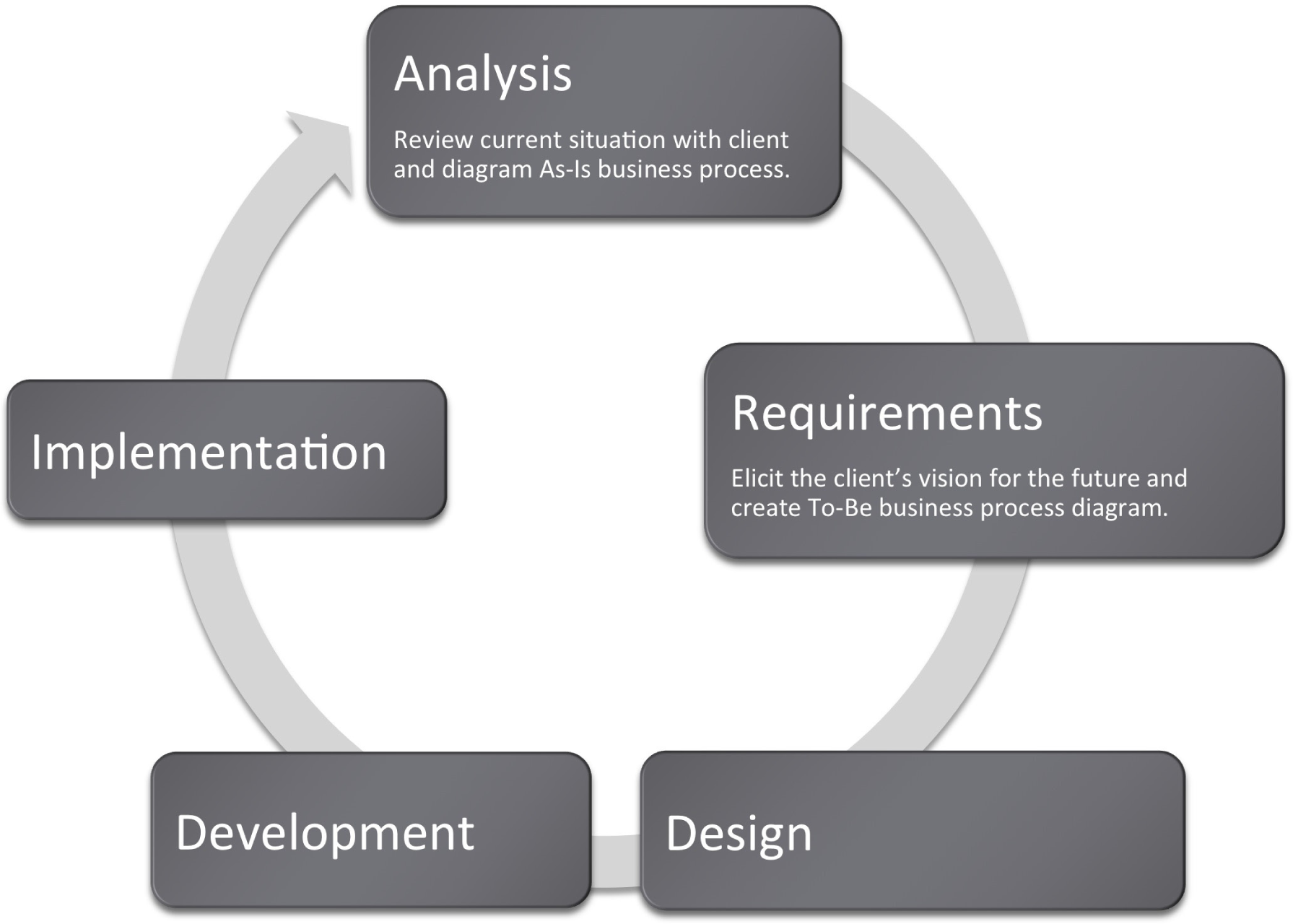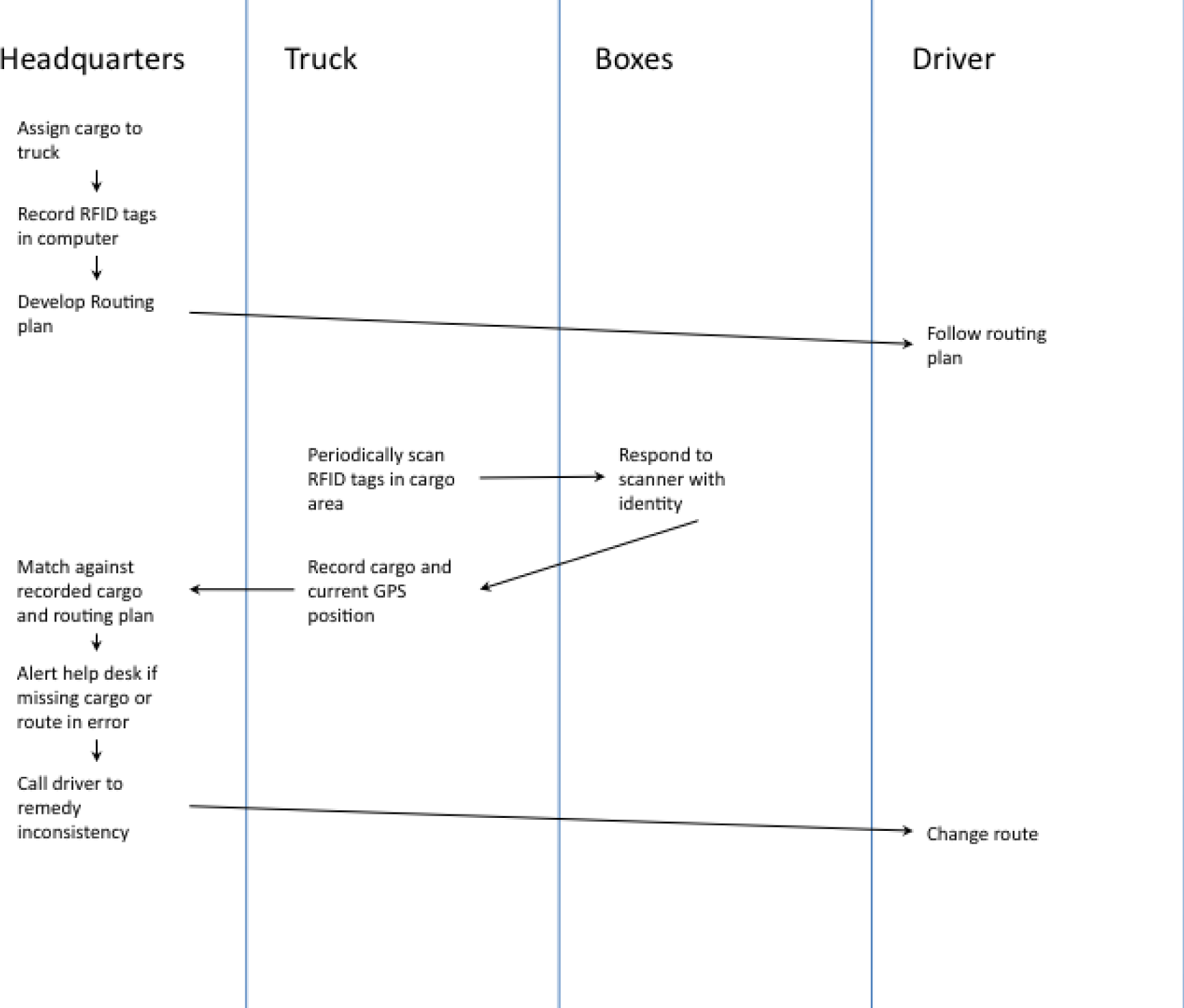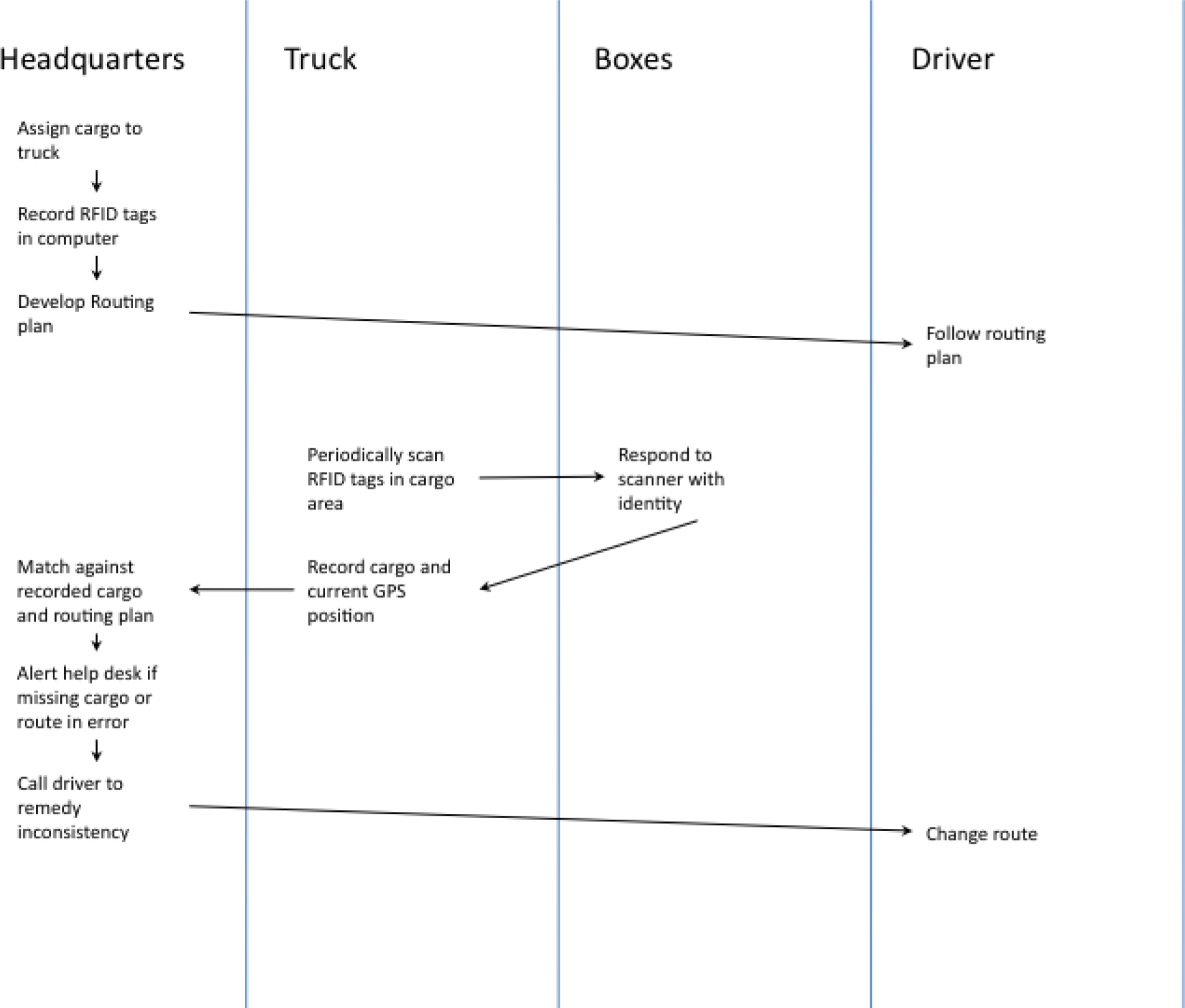This is “Information Systems to Enhance Business: Business Process Redesign”, chapter 2 from the book Designing Business Information Systems: Apps, Websites, and More (v. 1.0). For details on it (including licensing), click here.
For more information on the source of this book, or why it is available for free, please see the project's home page. You can browse or download additional books there. To download a .zip file containing this book to use offline, simply click here.
Chapter 2 Information Systems to Enhance Business: Business Process Redesign
Information Systems to Enhance Business: Business Process Redesign
“If you don’t know where you’re going, you might not get there.”
Yogi Berra
2.1 What Is a Business Process?
Learning Objectives
- Identify a business process
- Describe the difference between an As-Is and To-Be business process
- Ask questions to elicit business process information from the client
Introduction
Every information system is designed to improve business in some way. However, before making an improvement, it is critical to understand the current business process. In this chapter we will develop a technique to diagram business processes. We will first diagram the current business process—the so-called As-Is process. After studying the process, we will be in a position to propose and diagram a future process—the so-called To-Be process. If we have done our job well, the To-Be process will improve upon the As-Is process, making it more efficient, effective, user friendly, and so forth. In other words, every process improvement should move the business closer to achieving its goals.
Where Are We in the Life Cycle?
Many information systems projects are conceived of in a life cycle that progresses in stages from analysis to implementation. The diagram below shows the stages that we touch in the current chapter:

Goal Directed Activities.
Implicit in each current and future state are one or more business processes. A business processA set of goal directed activities. is a set of goal directed activities. In other words, a process describes the actions To-Be taken to accomplish a task. For example, applying to a university, filing taxes, and evaluating employees are all processes. The steps in applying to a university might include filling out an online form, submitting a credit card payment, requesting test scores be sent, and requesting that high school transcripts be sent.
Note that all of the processes mentioned above took place even before the advent of computers. Try to imagine how. Information systems simply transform the processes with the goal of making the process more efficient, convenient, effective, reliable, and so forth.
First, we represent the current (usually deficient) state As-Is processThe way the process functions right now before any intervention or redesign.. Seeing the As-Is process diagrammed exposes obvious areas for improvement in the process. For example, many years ago students registered for classes in person. The As-Is process in that era might have shown a student waiting in line outside a large auditorium. When his turn comes up, the student enters the auditorium. There are tables representing each department staffed with faculty from that department. For each course that the student wishes to take, he must find the corresponding department table and add his name to the list for that class. Buying concert tickets followed a similar process before services like Ticket Master went online. People used to camp out for days in advance outside the Ticket Master office.
Sometimes information technology may improve processes, other times no technology is required. Sometimes the solution is as simple as providing information for individuals completing a business process at the appropriate time, or simply rearranging the steps in the business process, in which case, no new information technology is needed.
The redesigned and improved business process is called the To-BeThe way the process will function after the redesign. process. This process takes into consideration the deficiencies identified in the As-Is process and the goals of the business. The area of work that focuses on improving business processes is called business process redesign. Individuals performing this work focus on understanding the As-Is process and how to improve it in the To-Be process.
Business Process Examples:
-
Shopping at a grocery store
-
The deli
- Taking numbers
- Rules about which products can be sliced on which machines
- Rules about wrapping product after slicing
-
The fish counter
- Taking numbers
- Rules about how to prepare the fish—head and tail off and so forth.
-
Checkout
- Scanning and weighing procedures
- Gathering customer data
- Printing customized coupons
- Optimal bagging
- Taking payment
-
-
Shopping at an online retailer
-
Product display
- Best selling
- By price
- By rating
- Cross selling—“You might also like…”
- Shopping cart and checkout processes
-
-
Inventory management
- Determining the inventory need
- Reordering with supplier
- Tracking and receiving shipments
- Stocking shelves
Note that most business processes subsume other business processes. One of the toughest challenges is knowing what process to focus on and with what degree of granularity to zoom in on the process. Never lose site of the problem you are trying to solve—and use that as your filter.
The Initial Client Meeting
Obviously, you can not diagram a business process without understanding the business. This will require meetings with the client. It is best to walk into those meetings with a willingness to listen rather than pretending that you know the client’s business. Ask open ended questions and take lots of notes.
Those that design systems are called business analysts or consultants. Analysts begin their work with an initial client meeting. The quality of the questions asked at that meeting may well determine the success or failure of the project. Using the following four open ended questions can help in this consulting situation (Starr, 2010):
- Current state: What does the client see as the current state of the situation/project?
- Future state: What is the vision of the client for the end point of the situation/project?
- Barriers: What barriers does the client envision will hinder reaching the vision?
- Enablers: What is the client already doing to reach the vision? What does the client think will help?
Note that these questions capture the aspirations of the client as well as perceived barriers and enablers to reach that vision. The assumption here is that the client knows her business pretty well, and the goal of the initial meeting is to capture her knowledge and vision without jumping to a solution.

The initial client meeting for a home renovation project adding a second story to a home. Note the barriers, time and money, and the enablers, the crane and manpower. Business problems require a similar type of analysis. Never assume that you know these items. Give the client the opportunity to explain. It will save you a great deal of time in the final analysis.
Key Takeaways
- A business process is a set of goal directed activities
- The As-Is process captures the analysis of the current state of the business
- The To-Be process captures the client’s requirements for the future state of the business. Ultimately the To-Be process will be the measuring rod against which you will evaluate the completed system.
Questions and Exercises
- Identify three business processes involved in the purchase of a car.
- Describe how the process of going on a date changed with the introduction of online dating services such as Match.com. What do you see as the pros and cons?
2.2 Diagramming a Business Process
Learning Objectives
- Create deliverables for the first two phases of the systems development life cycle
- Create As-Is and To-Be process diagrams for the redesign of a business process
- Given an advertisement, research and represent the business process redesign
- Manipulate images and text to create a best practice diagram in PowerPoint
- Choose and successfully employ PowerPoint techniques to solve a complex task
Actors and Actions
Improving a business process requires first understanding the process. Diagramming the steps in the process contributes greatly to that understanding. Business process diagramsBusiness processes may be represented by process diagrams containing actors in swim lanes and actions connected by arrows. Decision points in a business process are represented by diamonds. typically consist of actions linked by arrows. However, it is also important to be clear about who is performing each action. For this reason we create a swim laneA vertical portion of a business process diagram. for each actor in the process. The actors pass a metaphorical baton among themselves at different stages of the process.
An easy way to diagram a business process is to first identify all of the actorsA person or computer who takes actions or makes decisions in a business process. and place each in a swim lane. The process begins at the top of the page and continues down the page following the arrows. Arrows represent communication among the actors, while diamonds represent decision points. While actors are normally people, a computer standing in for the role of a person can also be an actor.
At times we can simplify the business process diagram by eliminating all but the essential elements. This makes the diagram less cluttered and easier to read. On the facing page we have a process diagram reduced to just three elements — swim lanes, actions, and arrows.
For the level of analysis needed in this course, the simplified diagram is more than sufficient. However, it is good to know the full lexicon, especially the decision point diamond shown on the next page.

To-Be business process for IBM’s package routing solution. In this solution Radio Frequency Identification (RFID) tags in the boxes communicate with their surroundings to report their geographic position back to the help desk. If a truck has taken the wrong turn, the boxes will notify the help desk. A help desk employee will in turn communicate by phone with the truck driver to reroute the truck.
It’s More Complicated Than That
What we showed on the prior page is actually a simplified form of a business process diagram. For the purpose of this course, the simplified form works just fine. However for the sake of completeness, we show a more advanced diagram more in the spirit of Universal Modeling Language (UML). It is not that the UML style diagram is better—just that you should be prepared to see it. The following table lists some of the symbols that you might encounter in a process flow diagram.
Table 2.1
|
Action state |

|
An action taken in the flow |
|
Start state |

|
A beginning of a flow; only one start state can be used |
|
End state |

|
An end of a flow; any number of end states are allowed |
|
Transition |

|
Indicates the control passing from one object to another |
|
Decision point |

|
Showing possible options and paths to follow |
|
Fork |

|
The beginning of parallel processes |
|
Join |

|
The integration of parallel processes |
|
Swim lane |

|
Represents ownership or assignment of a group of actions |
|
Artifact |

|
An object involved in the system, such as a server or database |
Key Takeaways
- A business process can be diagrammed by showing actors in swim lanes taking actions. Communication or message passing among the actors is represented by arrows.
Questions and Exercises
- Diagram the As-Is and To-Be processes before and after online dating.

Universal Modeling Language (UML) style As-Is process flow for recording grades.
Techniques
The following techniques, found in the PowerPoint section of the software reference, may be useful in completing the assignments for this chapter.: Layout-Change • Align • Shape-Insert • Text Box-Insert
L1 Assignment: Diagram Business Processes
Create As-Is and To-Be diagrams of a business process, given a video commercial. Many commercials on TV are really advertisements for improved business processes. IBM has been particularly active in this arena. IBM’s focus on business process improvement makes sense given that IBM is one of the largest consulting organizations in the world. In this exercise, you will view a commercial on YouTube and then create the As-Is and To-Be business process diagrams that the commercial implicitly represents.
Setup
Start up PowerPoint.
Content and Style
- Use the drawing tools in PowerPoint to create swim lanes and diagram the As-Is and To-Be business processes on separate slides.
- Make sure you title each slide to identify which is which.
- Align and space the content consistently. A sharp looking diagrams conveys professionalism.
- Include a copyright symbol and your name in the bottom left corner.
- When you are finished, submit the PowerPoint file according to your professor’s instructions. Your professor may want hard copy or an electronic submission to the course management system.
Deliverable
Electronic submission: Save your file as a PowerPoint presentation. Submit it electronically.
Paper submission: Create a printout by printing the slides directly out of PowerPoint.

Sample To-Be deliverable for the IBM RFID trucking commercial.




